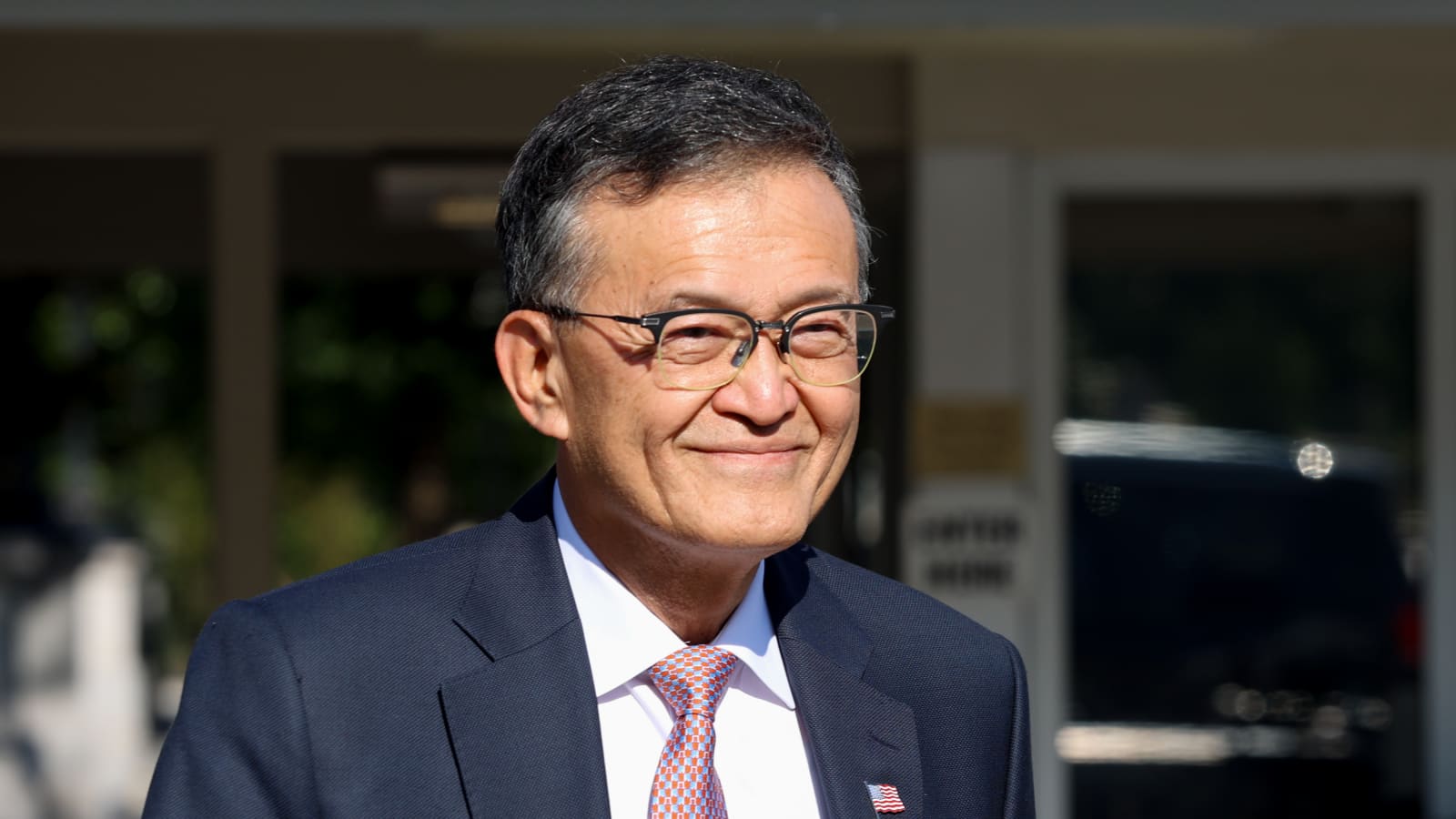Intel Stock Surges 7% as Trump Administration Considers Government Stake in Chipmaker
Intel Stock Surges 7% as Trump Administration Considers Government Stake in Chipmaker
By
David Goldfarb
Last updated:
August 15, 2025
First Published:
August 15, 2025

Lip-Bu Tan, chief executive officer of Intel Corp., departs following a meeting at the White House in Washington, DC, US, on Monday, Aug. 11, 2025. | Alex Wroblewski | Bloomberg | Getty Images
Intel Sees Stock Jump Amid Government Talks
Intel shares jumped 7% on Thursday following reports that the Trump administration is exploring taking a stake in the struggling chipmaker. This surge brings Intel’s year-to-date gain to 19%, a significant rebound after the company lost 60% of its market value in 2024—the worst annual performance in its history.
The discussions reportedly focus on funding Intel’s ongoing construction of advanced semiconductor factories in Ohio, a move aligned with President Trump’s push for more high-tech manufacturing on U.S. soil. Intel remains the only U.S.-based company capable of producing the fastest chips domestically, although global rivals like Taiwan Semiconductor Manufacturing Company and Samsung also operate U.S. facilities.
Leadership Changes and Strategic Shifts
Intel’s CEO, Lip-Bu Tan, who assumed leadership earlier this year, met with Trump at the White House following calls from the president for his resignation over alleged ties to China. Tan emphasized his commitment to U.S. national and economic security, signaling alignment with government priorities.
Under Tan, Intel canceled planned manufacturing sites in Germany and Poland and announced a slowdown in Ohio development. The company also faces challenges in its foundry business, which aims to manufacture chips for other companies but has yet to secure a major customer—an essential step for expanding operations and attracting further clients.
Government Involvement in U.S. Industry
The potential government stake reflects a broader trend under the Trump administration of increased intervention in key industries. Recent moves include taking a 15% share of certain Nvidia and AMD chip sales to China, acquiring a $400 million stake in rare-earth miner MP Materials, and obtaining a “golden share” in U.S. Steel to facilitate a foreign acquisition.
Investors appear encouraged by the prospect of government backing, viewing it as a potential stabilizer for Intel’s ambitious expansion plans and a boost to domestic semiconductor production.
Outlook for Intel and Investors
While the U.S. government has not confirmed any stake, Intel’s stock performance shows optimism among market participants. A successful partnership could accelerate factory development, strengthen its foundry business, and position the company to compete more effectively against global rivals.
For now, Intel remains under scrutiny as it navigates macroeconomic pressures, trade uncertainties, and the challenge of regaining investor confidence after its historic 2024 downturn. The market will be closely watching how potential government involvement impacts Intel’s growth trajectory in the months ahead.
Popular articles
Subscribe to unlock premium content
Global Cultures and the Hidden Drivers of Productivity and Happiness

The Future of Personalized Medicine

Digital Nomads and the New Global Economy

Global Cultures and the Hidden Drivers of Productivity and Happiness

The Future of Personalized Medicine

Global Cultures and the Hidden Drivers of Productivity and Happiness









